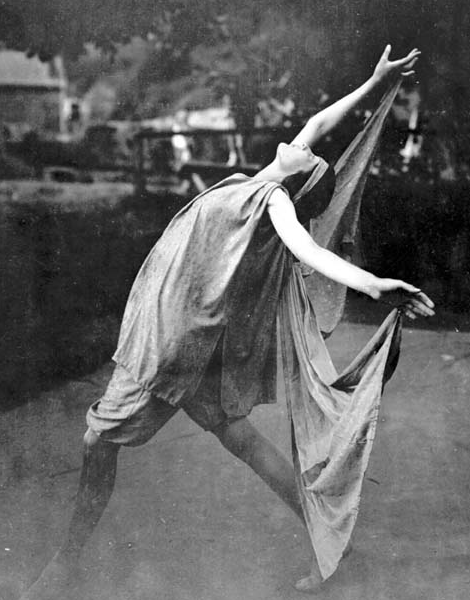In 1919, Asheville residents prepared for a second consecutive Fourth of July celebration without fireworks due to a city ordinance that prohibited the sale and use of the ceremonial explosives. Based on contemporaneous articles, citizens took the news in stride. The Great War was over! America and her allies had won! Who had time to bicker over pyrotechnics?
Certainly not Asheville, a city eager to celebrate the nation’s victory. Yet as the Fourth of July neared, patriotic fervor lost its unifying grip, as residents split over the controversial topic of modern dance.
That summer a welcome committee was formed to create a homecoming event for local members of the 81st Division. The committee, led by Lula Roberts Platt, settled on Independence Day as the gathering’s official date. Among the planned activities was the city’s first ever street dance.
The announcement was met with approval by some, including city commissioners who appropriated $500 to the welcome committee (equivalent to over $7,000 in today’s dollar). Others were less than thrilled by the plans. On June 25, 1919, The Asheville Citizen reported that the Asheville Ministers Association “went on the record as opposing the street dance.”
In the following day’s paper, one W. Legett denounced the AMA’s opposition, in a letter to the editor. “As a soldier, I have a right to make this protest, for the reason that it reflects on the character and integrity of each and every one of us,” he wrote. “The young ladies will be respected and protected as much so as in some pastors’ study or anywhere else.”
Legett concluded his piece by calling for “the broad-minded, big-hearted ministers of the Ministerial association … [to] rescind their action and come down to earth.”
Additional letters followed, arguing both sides. On June 27, 1919, Mrs. J.C. Pritchard, a homecoming committee member wrote, “This dance is to be under the chaperonage of responsible women and surely there could be no reasonable objection to a well-ordered crowd passing a pleasant evening[.]”
In the same day’s paper, the Rev. J.O. Ervin expressed his objections to the event. He began with an apology, expressing his regret over Legett’s misinterpretation of his association’s views on returning soldiers. “We think they are like other men, some good, some better and some otherwise,” the reverend wrote. “But certainly all brave and true to the flag and all for which it stands.”
Nevertheless, Ervin continued, “as the guardians of good morals and common decency,” it was the association’s duty to oppose the activity. Modern, cheek dance, “like the flames of hell … is consuming the spiritual life of our young people and that of a great many of the older ones, as well,” he argued.
Further, Ervin wrote: “We oppose it … because we want to keep the reputation and good name of our little city spotless and above reproach.” In addition, the reverend noted, “The more they dance the less they pray.”
On July 2, The Asheville Citizen ran its final letter on the matter. Though the writer signed off as “A Non-Dancer,” the message was one of compromise. Opposed to the modern cheek dance, as well as the “shimmie dance of the cabarets,” the writer nevertheless supported the committee’s plan, so long as chaperones were in attendance. “The Book of Books tells us there is a ‘time to weep, a time to laugh; a time to mourn, and a time to dance,’ the letter read.
Two days later, the homecoming celebration, named “The Victory Carnival,” took place without incident.
In the following day’s paper, The Asheville Citizen described the revelry. “Special lights had been arranged by the Asheville Power and Light company and night was turned into day,” the article read. Meanwhile, the paper continued, part of the street in the Grove Park neighborhood was roped off, as men in uniform danced with their invited guests to the sounds of Berry’s Municipal Band — all, of course, under the watchful eyes of 16 official chaperones.
Editor’s note: Peculiarities of spelling and punctuation are preserved from the original documents.




” . . .controversial topic of modern dance . . ”
Confusing reference. The picture suggests “modern dance” as in the new art form practiced by Isadora Duncan. But the author seems to be referring to social dancing by men and women in couples.
Thanks for the comment and sorry for the confusion. There was no available photo of the social dance held on July 4, 1919. Limited available options from that time period resulted in the photo selection you see. Contemporaneous newspaper accounts often referred to the latest styles of social dance as modern. But I understand how the terminology creates confusion. Thanks again and Happy Fourth.